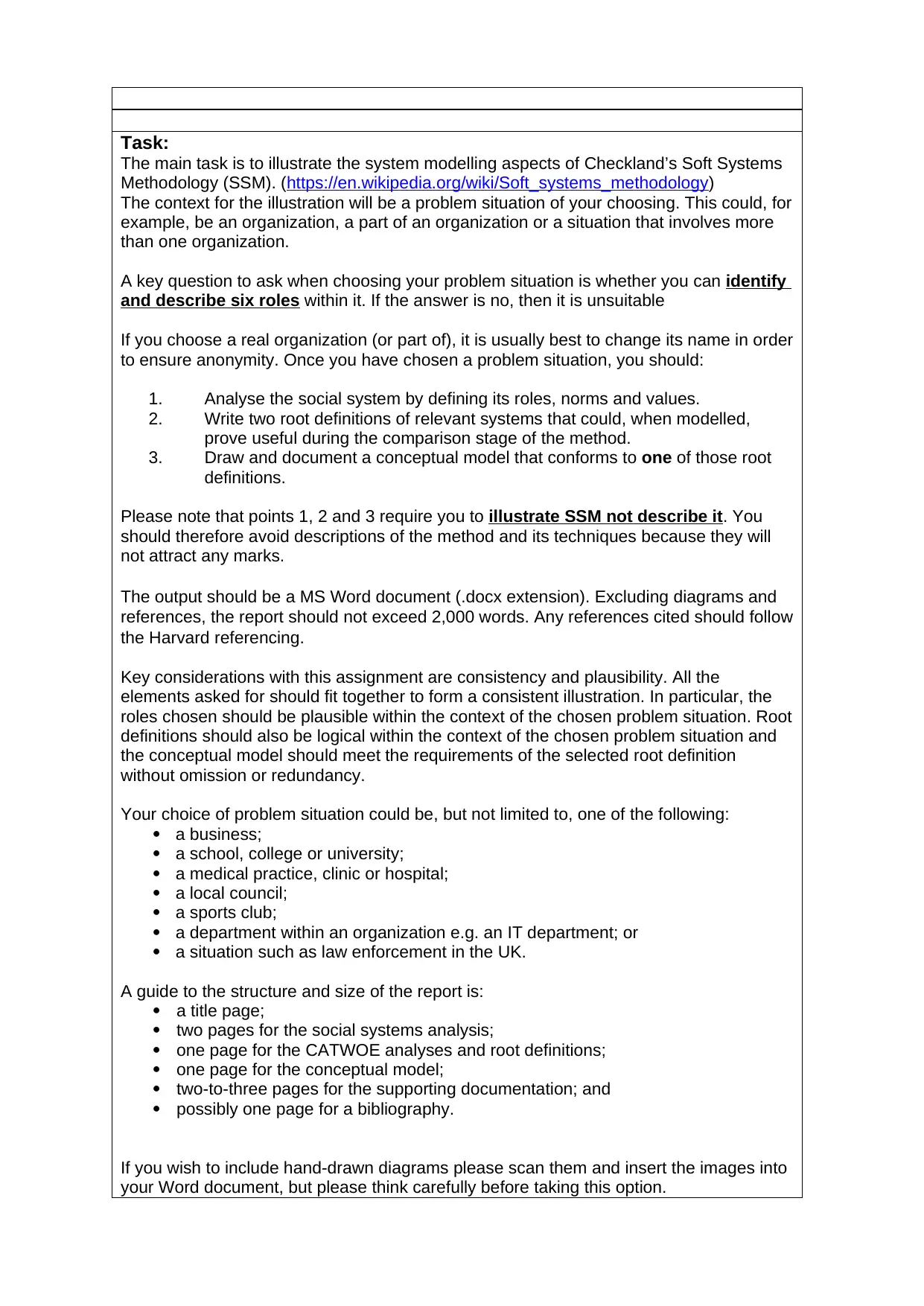Soft Systems Methodology: Problem Analysis, Report and Solutions
VerifiedAdded on 2019/09/16
|1
|483
|176
Report
AI Summary
This report provides an illustration of Soft Systems Methodology (SSM) through the analysis of a chosen problem situation. The report begins with an analysis of the social system, defining roles, norms, and values within the selected context. It then presents two root definitions and a CATWOE analysis, followed by a detailed conceptual model derived from one of the root definitions. The report adheres to specific guidelines regarding length, structure, and referencing, emphasizing consistency and plausibility throughout the analysis. The aim is to demonstrate a practical application of SSM, focusing on the creation of a coherent and logical framework for understanding and addressing a complex problem scenario, supported by relevant documentation and a bibliography. The report aims to showcase the application of SSM principles, emphasizing the importance of a clear and structured approach to problem-solving and system analysis.







![[object Object]](/_next/static/media/star-bottom.7253800d.svg)